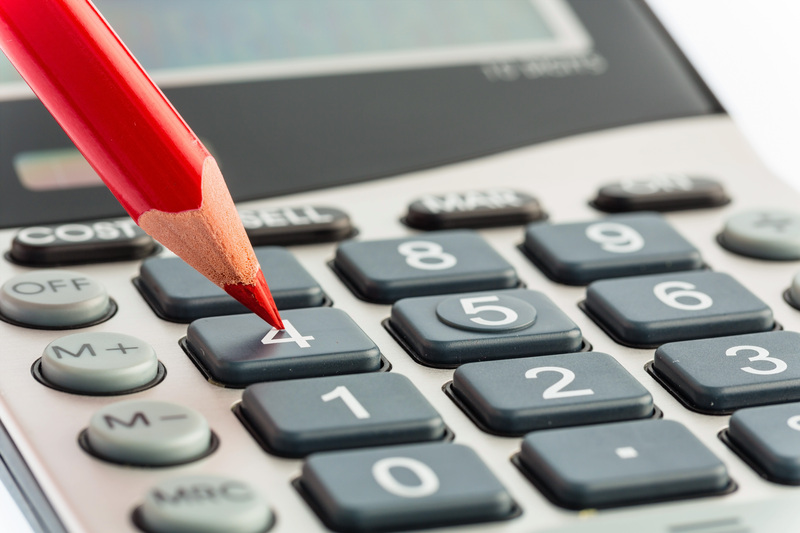Keys to Success: Professional Solutions for Moving Pianos
Posted on 15/06/2025
Keys to Success: Professional Solutions for Moving Pianos
Moving a piano is more than a simple relocation; it's a delicate operation that requires expertise, specialized equipment, and meticulous planning. Whether you're moving a grand piano, an upright piano, or a digital piano, each type presents unique challenges that demand professional solutions. In this comprehensive guide, we'll dive deep into the essential factors and best practices for moving pianos successfully, ensuring that your treasured instrument arrives safely at its new destination.

Why Moving Pianos Requires Professional Expertise
A piano is not just a piece of furniture--it's a finely tuned, sensitive instrument consisting of thousands of moving parts. Even the smallest mistake can result in damage that affects its appearance, sound, and playability. Professional piano movers offer specialized solutions, ensuring the process is seamless, efficient, and safe.
Main Challenges of Piano Moving
- Weight and Size: Pianos are heavy and bulky, often weighing between 300 to over 1,000 pounds, making them difficult to maneuver.
- Fragility: Internal components and exterior finishes are highly sensitive to bumps, humidity, and shocks.
- Complex Structure: The intricate design of strings, hammers, and pedals means even minor mishandling can cause irreversible harm.
- Space Constraints: Narrow hallways, tight staircases, and tight corners can pose serious obstacles during the move.
Because of these challenges, seeking professional piano movers is vital in ensuring the safety and integrity of your musical investment.
Understanding Professional Piano Moving Solutions
Expert piano movers use proven techniques and equipment designed specifically for transporting pianos. Here's an in-depth look at the keys to success when considering professional piano moving solutions:
1. Thorough Pre-Move Assessment and Planning
- Site Inspection: Professional movers conduct a thorough walkthrough of both the current location and the new site. This allows them to identify possible difficulties, such as tight turns or steps, and plan the safest route for the move.
- Instrument Assessment: Understanding your piano's type, dimensions, and value helps movers strategize the best handling and transport approach.
- Customizing Moving Plans: Professional solutions are never "one-size-fits-all." Movers develop a tailored plan to match your piano's exact requirements.
2. Specialized Equipment and Tools
- Piano Dollies and Skids: These are heavy-duty, padded platforms designed to distribute the weight evenly and prevent stress on crucial points.
- Moving Blankets and Straps: Soft, thick blankets wrap the piano, protecting the finish from scratches and knocks, while industrial-strength straps secure it safely during transit.
- Ramp Systems and Hoisting Equipment: Professional piano movers use ramps, lifts, or cranes when dealing with stairs, balconies, or elevated spaces.
- Custom-Crafted Moving Boards: For grand pianos, tear-down processes often involve placing the instrument on a special board designed for maximum stability during transport.
3. Skilled Handling and Protective Techniques
Moving pianos safely demands a blend of physical strength, knowledge, and teamwork:
- Teamwork: Piano movers work in coordinated teams to ensure balanced lifting and smooth navigation.
- Disassembly ("Tear Down"): For large grand pianos, movers carefully remove legs, pedals, and the lyre before transport, reducing the risk of damage.
- Packing and Wrapping: Every protruding part and delicate surface is securely wrapped and cushioned to absorb vibration and minor impacts.
- Upright vs. Grand: Uprights are generally kept vertical, while grands rest on their sides on a piano board, each requiring different expertise.
4. Safe Transportation and Unloading
- Climate-Controlled Vehicles: Pianos are sensitive to temperature and humidity fluctuations. Movers use climate-controlled trucks to protect the instrument's tuning and wood integrity.
- Secured Positioning: Straps anchor the piano to prevent unwanted movement during transit.
- Careful Unloading: Professionals reverse the precautions taken during loading, ensuring step-by-step safety until the piano is securely placed in its new home.
5. Post-Move Services: Tuning and Inspection
- Professional Tuning: Even with the best handling, piano tuning may be affected by vibrations and climate changes. Many piano movers offer or recommend post-move tuning services by certified technicians.
- Inspection and Assembly: The final step includes reassembling any removed parts and inspecting the piano for any issues that might have occurred during the move.
Piano Moving: Common Mistakes to Avoid
Understanding what NOT to do can be as important as knowing the correct techniques when it comes to moving pianos professionally. Here are some key pitfalls to avoid:
- Underestimating the Job: Attempting to move a piano with insufficient manpower or using the wrong equipment can result in injury or permanent damage to the instrument.
- Improper Packing: Using standard moving blankets or insufficient wrapping leaves your piano vulnerable to scratches and environmental damage.
- Neglecting Climate Concerns: Exposure to extreme temperatures or humidity can cause the wood to warp and the finish to crack.
- Poor Route Planning: Overlooking obstacles like tight corners, elevators, or even door frames can turn the move into a disaster.
- Not Using Professional Piano Moving Services: DIY moves drastically increase the risk of harm to both the piano and the movers.
How to Choose the Best Professional Piano Movers
With so much at stake, it's crucial to identify the most reliable piano moving professionals in your area. Here's how you can make an informed choice:
Reputation and Reviews
- Online Testimonials: Reading reviews on Google, Yelp, and specialized piano forums provides insights into the mover's dependability and customer service.
- Word-of-Mouth: Recommendations from friends, family, or music teachers can point you to trusted moving experts.
Experience and Credentials
- Years in Business: Longstanding companies have the expertise and resources to handle complicated piano moves.
- Trained Personnel: Ensure that movers are specifically trained to move pianos--not just general household items.
Insurance and Safety Standards
- Comprehensive Insurance: Confirm that your piano will be covered for both in-transit and loading/unloading damages.
- Licensed and Bonded: Reputable moving companies will be fully licensed and insured for your peace of mind.
Piano Moving Cost Transparency
- Written Estimates: Get all costs in writing before agreeing to the move, including fees for stairs, difficult access, or post-move tuning.
- No Hidden Charges: Clarify if mileage, storage, or other incidental expenses are included.
Types of Pianos and Their Unique Moving Requirements
Different types of pianos require tailored solutions for safe and efficient transportation. Let's explore the nuances:
Upright Pianos
- Description: Compact and vertical, upright pianos fit in smaller spaces and are somewhat easier to maneuver than grand pianos.
- Moving Notes: Still heavy (usually 300-500 pounds), they require professional equipment to be moved safely without damaging the action or exterior.
Baby Grand and Grand Pianos
- Description: Their horizontal frame and long strings make these pianos exquisite, yet particularly challenging to move.
- Moving Notes: Disassembly is usually necessary--legs, pedals, and lyre are carefully removed, with the main body placed on a custom piano skid.
Digital Pianos and Keyboards
- Description: Lighter and less fragile, but sensitive electronic components still require careful packing.
- Moving Notes: While not as cumbersome as traditional pianos, protection against moisture and shocks is still essential.
Antique and Specialty Pianos
- Description: Vintage pianos may be more fragile due to age and require extra precautions to preserve historical finishes and components.
- Moving Notes: Choose movers experienced with antiques who understand the value beyond the music.

Additional Tips for a Flawless Piano Moving Experience
To make sure your piano moving process goes off without a hitch, consider these pro tips:
- Schedule in Advance: Prime moving dates fill up quickly, especially with specialized movers. Book early to ensure availability.
- Inform Movers of Any Challenges: Share photos, measurements, and any access issues with your moving team.
- Clear Pathways: Remove obstacles, rugs, and clutter from all routes before moving day.
- Have Supplies Ready: Provide easy access to power outlets and entryways for both your movers and tuning technicians post-move.
- Arrange for Insurance: Though professionals have coverage, extra insurance adds peace of mind for high-value instruments.
Conclusion: Making the Right Choice for Your Piano Move
Successfully moving a piano is a complex task that requires professional experience, industry-specific equipment, and careful planning. By entrusting your cherished instrument to skilled piano movers, you ensure its beauty, value, and sound quality remain intact for years to come. Remember, using a professional piano moving service isn't just about avoiding damage--it's about safeguarding the joy and artistry your piano brings to your life.
If you're considering a move, invest in the best professional solutions for moving pianos to guarantee a harmonious transition for your instrument and peace of mind for yourself.
